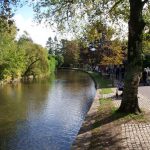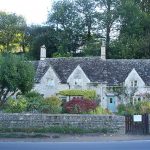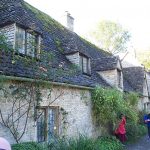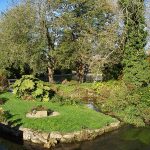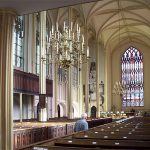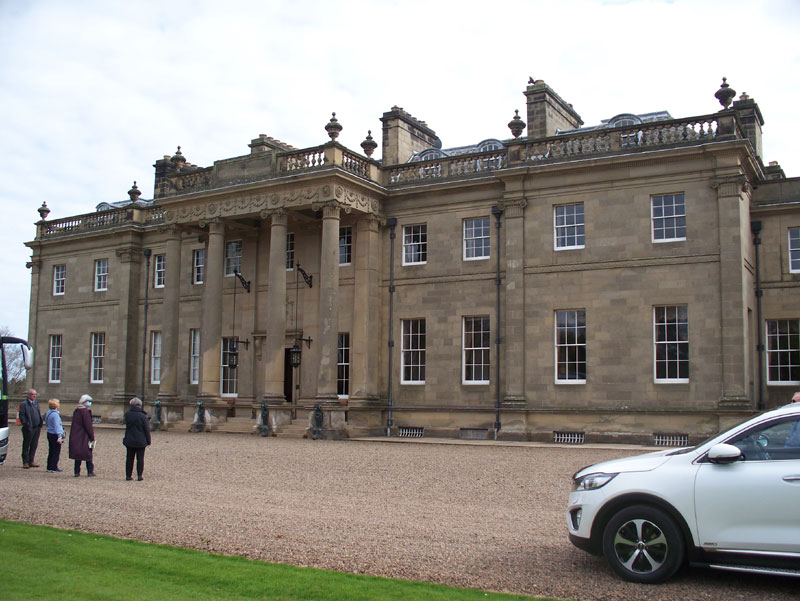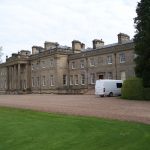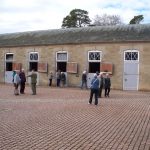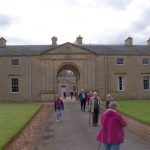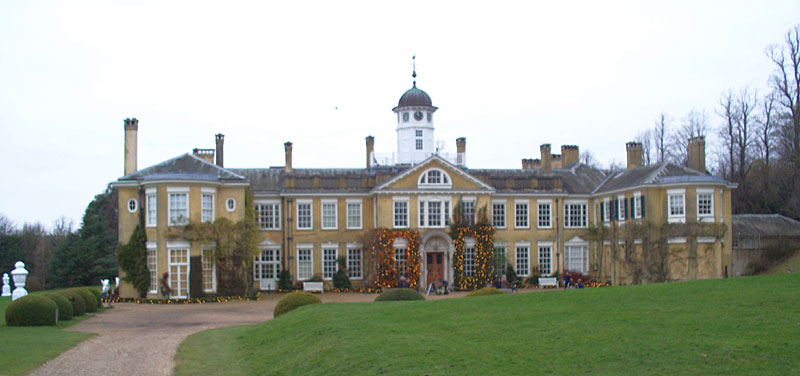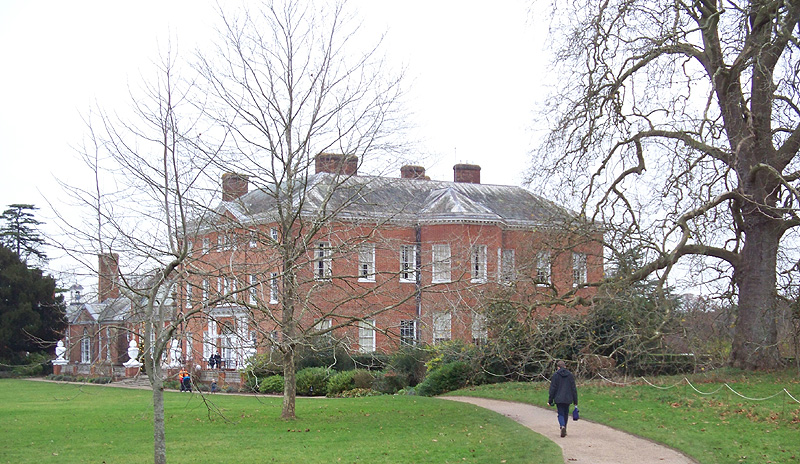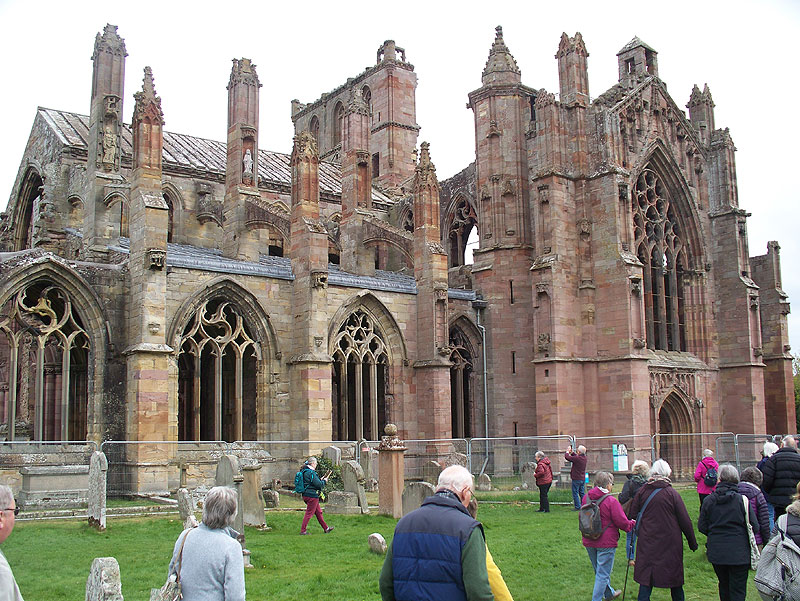 Historic Scotland
Historic Scotland
Melrose Abbey was founded in 1136 by Cistercian monks, but was largely destroyed by Richard II’s invading army in 1385. What remains today is largely a result of the subsequent rebuilding. It was still unfinished in 1504, and badly damaged by Henry VIII’s invasion of 1544. It appears that the nave was never finished. The Protestant Reformation took place in 1560. Subsequently the monk’s choir part of the church was adapted for use as a parish church, with added walls. A drawing of 1800 shows a roofless nave. In 1810 a new parish church was built in the town, and the abbey fell out of use.
Today the choir, transept and presbytery remain to full height while the monastery buildings remain only as foundation walls.
In 1822, Sir Walter Scott supervised extensive work to stabilise the ruins.
The interior was inaccessible when I visited due to concerns about unstable masonry. The outside of the choir, transept and presbytery on the south side are of particular interest because of the numbers of medieval carvings of gargoyles and other figures, including a bagpipe-playing pig.
Across a lane is a small museum in the ‘Commendator’s House’ containing carvings and other fragments found on the site.
Nearby are two small gardens curated by the National Trust for Scotland.
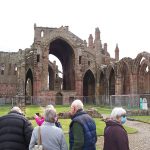
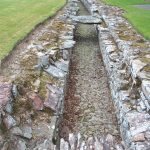
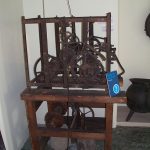
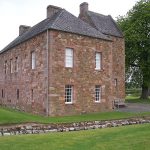
Author: visit
Traquair, Peeblesshire
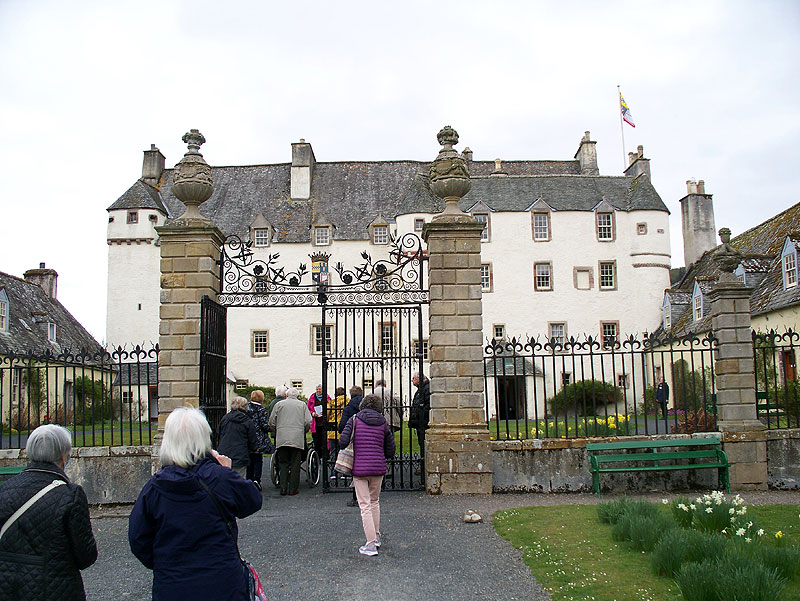 Privately Owned
Privately Owned
Traquair is said to be Britain’s oldest inhabited house. It existed in 1107 and has been extended since then. The lower side wings were remodelled in 1695-1699. The house was used by various Scottish kings and has a long association with Jacobites and Catholicism. Mary Queen of Scots stayed here and one can see her bed and the cradle in which she rocked the infant James.
A number of rooms on several floors are opened to visitors, containing period furniture, artifacts and facsimile documents. The High Drawing Room has recently rediscovered painted beams exposed in the ceiling. On an upper floor there is a large priest’s room with a concealed spiral staircase leading down. There is a lot to look at inside the house.
The Dining Room and Lower Drawing Room are in one of the wings, built 1694. In the other wing are the post-Catholic emancipation chapel, the brewhouse, exhibitions and the shop. In the grounds are a walled garden, woodland walks, a menagerie, a maze and a pond, formerly a loop of the Tweed river.
I did not have time to explore the grounds.
There is a lot to see here, so you should schedule a longer visit.
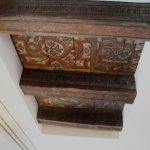
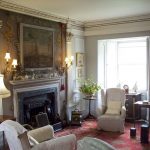
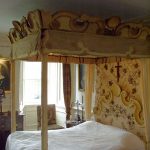
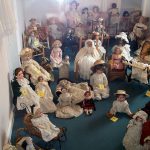
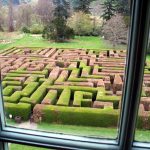
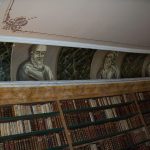
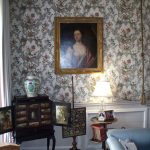
Abbotsford, Roxburghshire
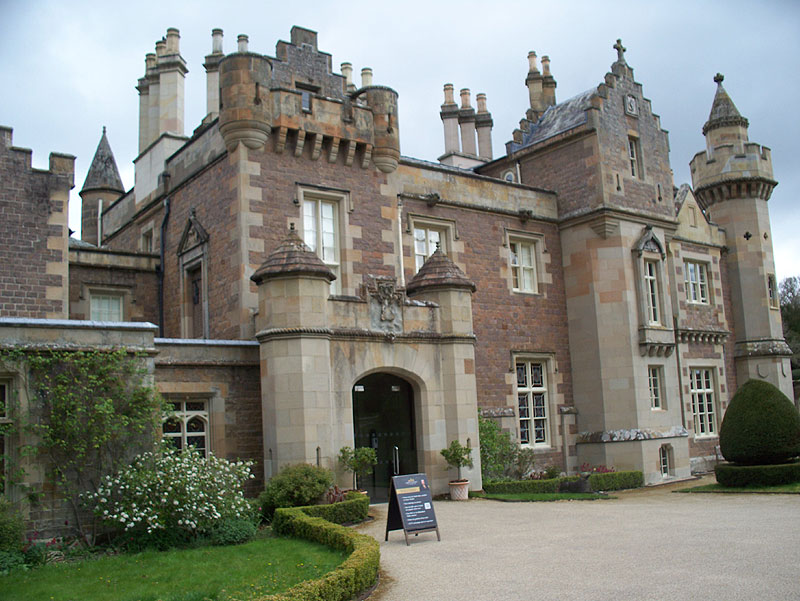 Privately Owned
Privately Owned
Abbotsford was the home of famous Scottish author Sir Walter Scott. Scott bought a run-down farm in 1811 and by 1819 had added various elements of the present building in a Scots Baronial style. The house contains various pieces of architectural salvage incorporated into the structure. Scott died in 1832, and his heirs extended the house in the 1850s, doubling its size, to provide additional accommodation while preserving Scott’s rooms as a museum. The extension also includes a chapel, which is open to visitors. The house recently underwent a lengthy restoration, re-opening in 2013.
Notable rooms include the entrance hall, study, library, drawing room, armoury, dining room, and ante-room. Little remains of the original decoration scheme for the dining room. Otherwise the decoration and contents of the rooms are more or less original.
The study and library contain Scott’s collection of 9000 books, many of which he used to research for his novels.
A modern cafe, shop and exhibition building stands between car park and house. Around the house are walled gardens and woodland and river walks. The ruins below the house, next to a car park, are the original stables.
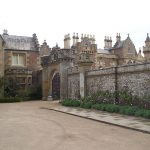
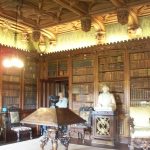
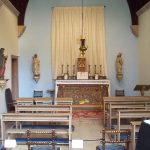
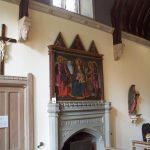
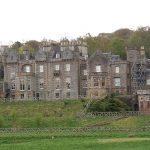
Manderston House, Berwickshire
Though Manderston House looks Georgian, it was built in 1901-1906 as a remodelling of an earlier house on the site. The north front was completely renewed, a new bachelor’s wing added and other parts converted. The architect was told that the cost ‘simply didn’t matter’. The interior designs are inspired by Robert Adams’ work at Kedleston. Downstairs a number of elegantly furnished rooms are on show, including the outer hall, dining room, hall, library, ball-room, drawing room and various ante-rooms. The main staircase has silver-plated brass banisters which required a lot of polishing – now done by volunteers.
The upstairs rooms were closed on my visit, but the basement, which is almost unchanged, was on view. The housekeeper’s room, servant’s hall, manservant’s bedroom, kitchen and scullery were all finished to an unusually high standard. The kitchen has an island cooker with hidden under-floor flue.
The house was filmed for the TV series ‘The Edwardian House’ aka ‘The Manor House’ broadcast by Channel 4 in 2004.
Outside, a disused service wing can be seen attached to the house, screened by trees. Further away are the impressive Stables, and a marble diary with tower and staff housing (not seen). There are also various formal and informal gardens and a boathouse (not seen).
Castle Ashby Gardens
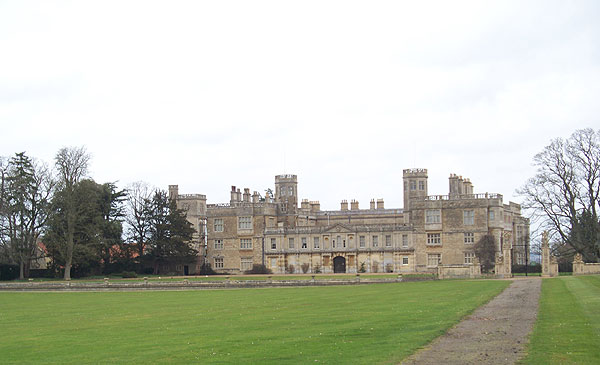
Privately owned. Not to be confused with the National Trust’s Canons Ashby.
I remember cycling to Castle Ashby some years ago, when I was younger and fitter, and entering the central courtyard. The house is no longer open to the public, but the gardens and church are regularly open.
The gardens are impressive, and include an area of formal gardens with an Orangery and other structures, an arboretum (woodland), and a walk past stretches of water. Adjacent to the gardens is the walled garden, laid to grass. It can be looked into but not entered, and the house’s terraced garden likewise can be looked into but not entered. There is a menagerie housing meerkats, monkeys, exotic birds, pigs, a giant tortoise and a miniature horse.
The church is normally open but I did not find the interior of especial interest.
The gardens are well worth a visit. Allow 2 to 3 hours.
Entry to the gardens is much cheaper in the winter months but some auxiliary facilities may be closed. Admission was by online booking only. If you need the loo on arrival, it is in the left hand end of the row of reception buildings (not well marked).
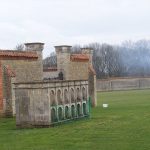

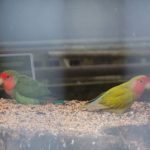
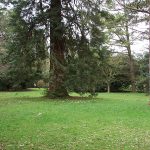
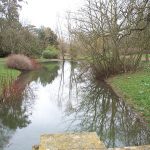
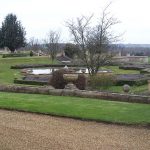
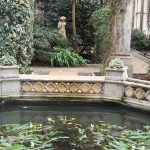
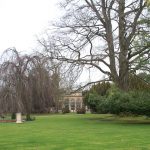
Polesden Lacey
While there were houses on the site from the 17th century, the current house was built in the early 1900’s. It was bought by and fitted out for super-rich McEwan brewery heiress Maggie Greville and her husband Ronald. The principal rooms received showy interiors in a succession of different architectural styles with much use made of architectural salvage. Maggie Greville was a famous society hostess who entertained the rich and famous, including royalty. During the wars she was apparently sympathetic to appeasement and entertained the Nazi ambassador, von Ribbentrop.
Maggie Greville added to her father’s collection of art, and the picture collection is impressive, including some Old Masters. There is also china and other objects of art.
The grounds include various formal and walled gardens as well as various lawns, areas of woodland, and walks.
At the time of my visit only the ground floor rooms were open, and these were decorated for Xmas. Most of the items of interest could be seen in a 2-hour visit. It is probably worth having the guidebook to hand as you look around the house. There is also a more expensive guide to the pictures, but it only illustrates about half of them, so more use for taking around than reading afterwards.

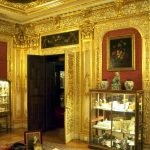
Hatchlands Park, Surrey
National Trust
The Hatchlands estate has passed through various hands. The present house is mostly as built in the 18th century for Admiral Boscawen and his wife. Boscawen died of a fever soon after his retirement, and his widow sold the house after a few years. The next owners, the Sumners, are responsible for the present parkland. The following owners, the Rendels, made some alterations and eventually presented the house to the National Trust in 1945. At this point the house was empty. After various tenancies, the house was offered to artist and collector Alec Cobbe with the suggestion that he fill it with his family’s collection of musical instruments, furniture and pictures.
The interior has been redecorated and now contains a collection of grand pianos and harpsicords, and a large number of pictures, as well as some casts of classical sculptures. All the instruments are kept in playable condition and there are occasional recitals. Guide leaflets for the pictures and instruments are available, and it would be worth taking round the (rather expensive) house guidebook rather than reading it afterwards.
In the grounds there are some walks and patches of woodland. There was no NT shop, seemingly a casualty of Covid19.
Longthorpe Tower, Peterborough
English Heritage.
The tower is now surrounded by housing, but was earlier attached to a farm. Connected parts of the building originally formed the manor’s Great Chamber etc but English Heritage only own the tower, the remainder now being a private residence. The main chamber contains some extremely rare medieval wall paintings, uncovered in the 20th century. The upper chamber can also be visited. Visits are currently by booked guided tour only.
The wall paintings are of considerable interest, but parts are much damaged and one needs the guided tour for interpretation.
Visitor parking is in Woburn Close about 100 yards away. Note that there is no waiting area inside the building so visitors should arrive on time and wait at the foot of the stairs to be admitted. There is no convenient waiting area outside either, other than the access lane. The postcode covers a large area, so drivers should set their satnav for Woburn Close.
Croome, Worcestershire
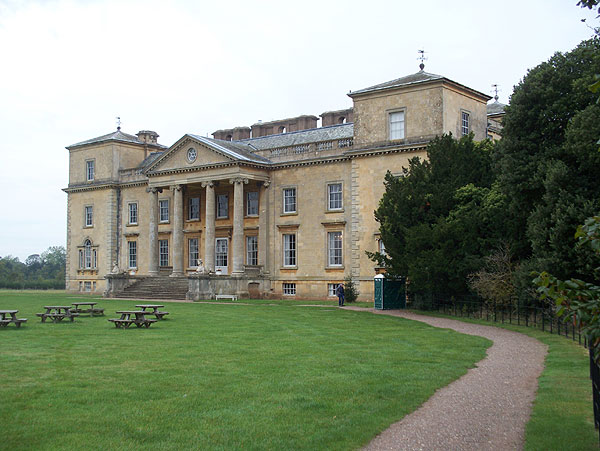 National Trust
National Trust
Croome largely represents the vision of a single man, George William, 6th Duke of Coventry. The site was originally boggy land. Lancelot ‘Capability’ Brown was responsible for the landscape and for the remodelling of the house – his first commission. Robert Adam designed a number of room interiors.
A walk (or route march) around the estate brings one past many features of this created landscape. First the church, constructed as an eyecatch after the previous church, judged too close to the house, was demolished. Then an ice house hidden in the wood. Then the walled garden, privately owned and only open at certain times. The Rotunda stands on a rise and forms a viewpoint for the house and several distant eye-catchers.
The house stands in the middle of the park. Nominally, all four floors are open to visitors but when I visited some rooms were closed for repairs and I did not get any guided tour to the top floor. The guidebook floor plan marks part of the Red House extension as open to visitors but the shortform leaflet didn’t and this wing was closed for repairs.
The rooms are mostly empty or used for exhibitions, the original furnishings and contents being elsewhere or lost in a warehouse fire. The Long Gallery has impressive plasterwork, apparently recently restored. The Dining Room plasterwork was colourised by the Kirshna movement when they were in occupation of the house. It looks great, but purists may not agree. Also in this room is a display of some of the Croome china, well worth seeing.
Above, the rooms mostly look unrestored. The Chinese Room has lost its plaster ceiling. Some fell down and the NT removed the rest for safety. Two rooms contain the last private owner’s bathroom fittings, retained by the NT as part of the ‘history of the house’. Personally I think they look awful and should go.
Moving on, a reconstructed Chinese bridge spans the river giving access to more parkland. A hard path leads on to the lake with various monuments, the Grotto with statue of Sabrina, and the Temple Greenhouse. Finally one returns to the church.
At the estate entrance are some black huts which house the reception, shop, and tea-room. The huts are one of the few remnants of RAF Defford, an airfield used during WWII for development work on radar. In another of the huts you will find a very interesting museum and exhibition of RAF Defford and its work.
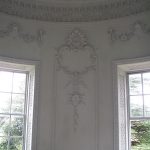
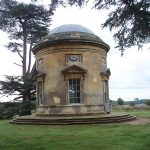
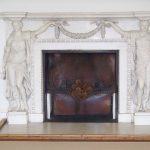
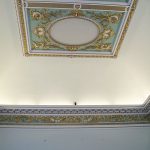
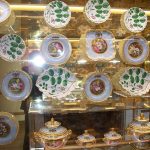
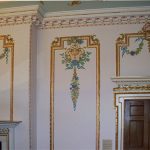
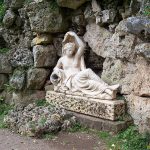
Cotswolds Villages
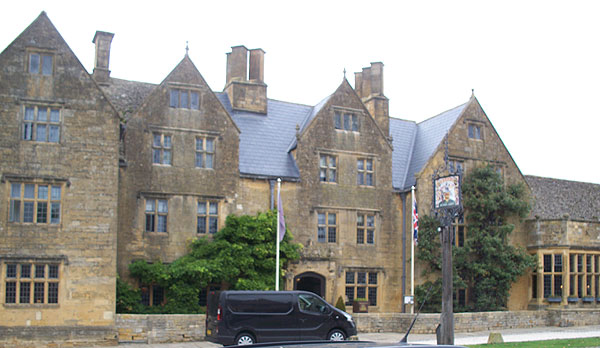
Pilbury has a row of picturesque row of weavers’ cottages built in local stone and owned by the National Trust. They are probably the most photographed cottages in England.
Tetbury has an interesting Georgian-period church – St Mary the Virgin.
